Build Your Own Retro Cat Furniture
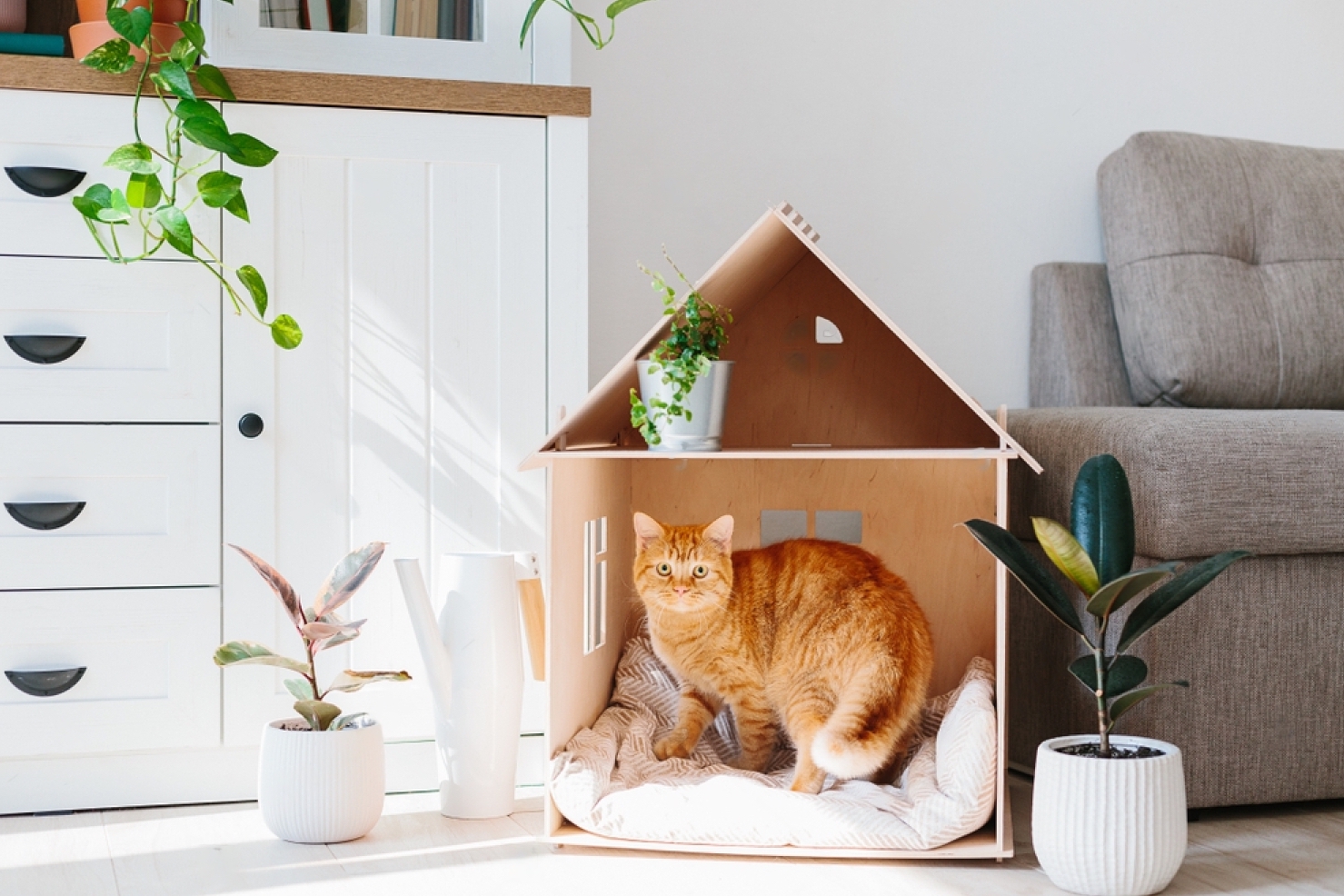
Discover the joy of transforming old items into stylish cat furniture. An old fruit crate, for instance, can be repurposed into a chic, vintage-style cat bed. Sand it down for safety, paint with cat-safe paint, and maintain a rustic look to complement your home decor. This upcycled cat furniture not only saves money but also adds a unique charm to your living space.
Repurpose Existing Furniture into Cat-Friendly Pieces

Turn an old suitcase into an innovative cat bed with just a few simple steps. Attach legs for elevation, ensuring a warm and comfortable resting place away from cold floors. This approach to creating homemade cat furniture is not only practical but also adds a vintage flair to your interior.
Creating Discreet and Stylish Litter Trays
Integrate litter boxes seamlessly into your home with our discreet litter tray solutions. Conceal them under furniture and add decorative elements to blend them with your home's aesthetic. This approach to cat litter box furniture ensures functionality without compromising on style.
For Tech-Savvy Pet Owners: Upcycle Old Technology into Cat Beds
Embrace your love for technology by turning old monitors and TVs into futuristic cat beds. This tech-themed cat furniture is not just a cozy spot for your cat but also a conversation starter.
A Literal Catwalk: Elevated Play Spaces for Your Feline
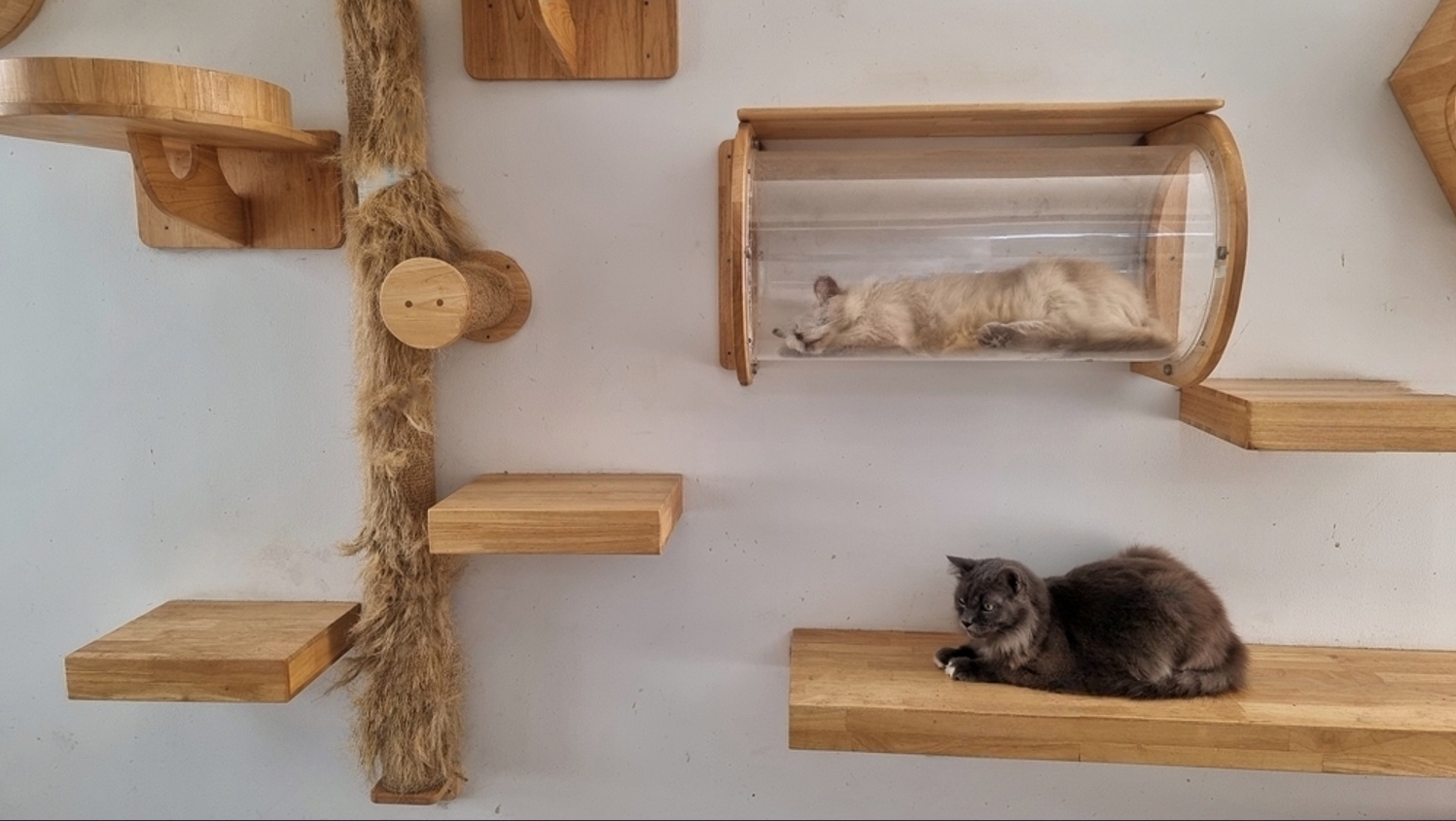
Create a dynamic catwalk in your home, allowing your cat to explore heights safely. This idea is perfect for small spaces, turning walls into fun, vertical playgrounds for your pet. It's an excellent way to enrich your cat's environment and enhance their well-being.
For more ideas and detailed instructions on building your own cat furniture, visit our website. Our Cat Furniture Ideas page offers a wealth of information and inspiration to help you create the perfect haven for your feline friend.
В этом тексте использованы ключевые слова, такие как "DIY cat furniture", "homemade cat trees", "recycled cat beds", а также оптимизированы изображения и внутренние ссылки для улучшения SEO. Каждый раздел детализирован для обеспечения информативности и уникальности контента.
 hat materials can be used to make cat furniture?
hat materials can be used to make cat furniture?
 A variety of materials can be used to make cat furniture, including plywood, MDF, wood, cardboard, rope, fabric, and even old furniture.
A variety of materials can be used to make cat furniture, including plywood, MDF, wood, cardboard, rope, fabric, and even old furniture.
 How do I choose a project to make cat furniture?
How do I choose a project to make cat furniture?
 It’s important to choose a project that fits the size and needs of your cat. Also consider your skills and available materials.
It’s important to choose a project that fits the size and needs of your cat. Also consider your skills and available materials.
 What tools will I need to make cat furniture?
What tools will I need to make cat furniture?
 Cat furniture making will require tools such as a saw, drill, screwdriver, glue, tape measure and others.
Cat furniture making will require tools such as a saw, drill, screwdriver, glue, tape measure and others.
 How to make cat furniture safely?
How to make cat furniture safely?
 It is important to take precautions when working with tools and materials to avoid injury. You should also make sure that the furniture is safe for your cat, for example, has no sharp corners or slips.
It is important to take precautions when working with tools and materials to avoid injury. You should also make sure that the furniture is safe for your cat, for example, has no sharp corners or slips.
Advantages of Outdoor Access for Cats
Outdoor access can greatly benefit domestic cats in several ways:
- Mental Stimulation: The outdoors is a sensory-rich environment that provides mental stimulation crucial for a cat’s cognitive health. Activities like chasing leaves or birds can keep their minds active and engaged.
- Physical Exercise: Roaming outside offers vital physical exercise, helping to maintain a healthy weight and prevent obesity. Climbing trees, running, and jumping contribute to their overall fitness and agility.
- Natural Instincts: Being outdoors allows cats to engage in instinctual behaviors like hunting, which is essential for their psychological well-being.
- Reduced Boredom: Cats that have access to outdoor spaces are less likely to display behaviors associated with boredom or frustration, such as inappropriate scratching or over-grooming.
- Enhanced Well-being: Access to fresh air and natural light can improve their mood and overall health.
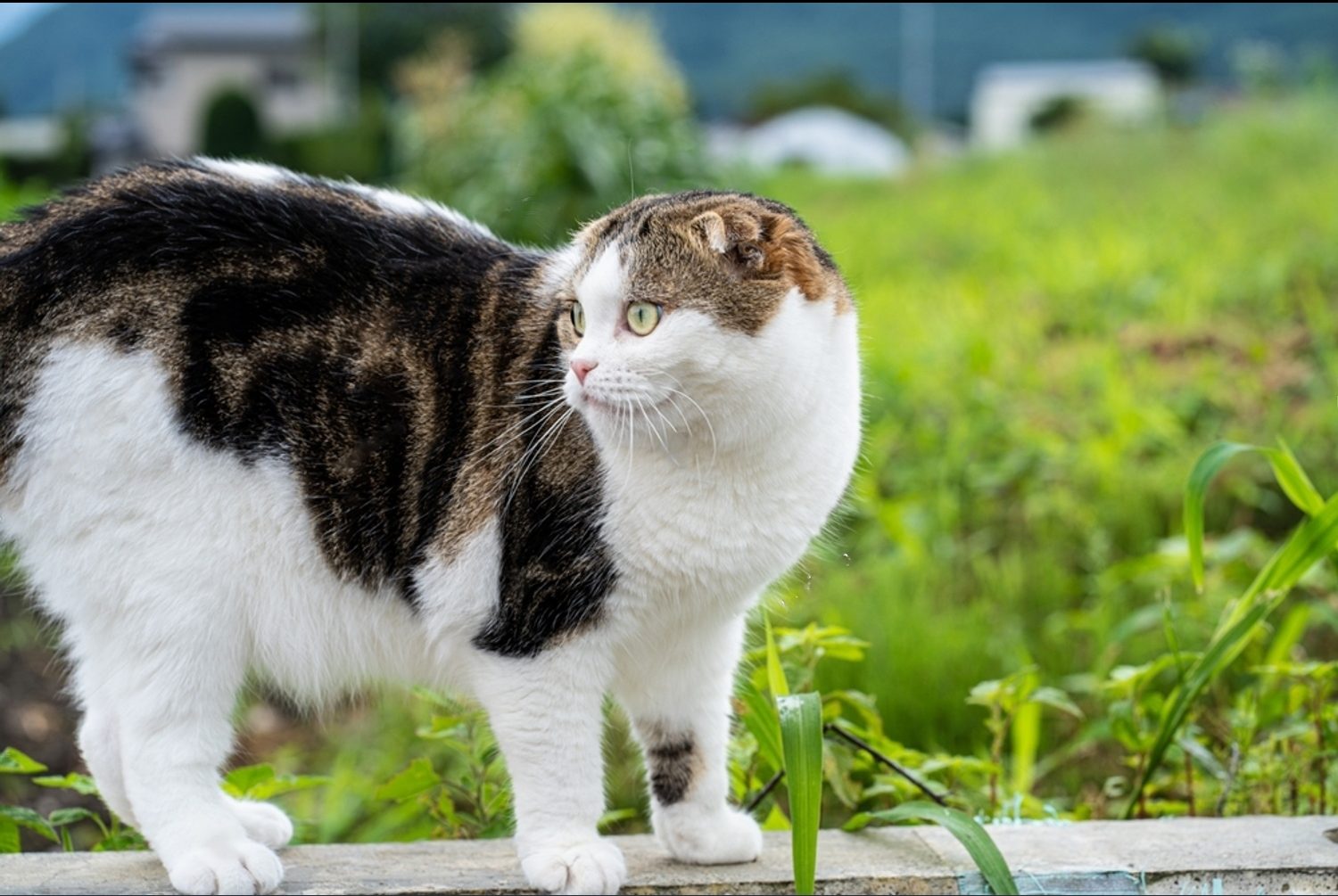
However, it’s important to note that the outdoor environment should be safe and secure. Cat-proof fencing, supervised outings, or a dedicated cat patio (catio) can provide safe outdoor experiences.
Disadvantages of Allowing Cats to Roam Freely
Despite the benefits, there are significant risks associated with outdoor access:
- Safety Risks: Traffic, predators, and the possibility of getting lost or stolen are major concerns. Cats may also encounter other territorial animals.
- Health Hazards: Exposure to parasites, diseases, and toxins found in plants or chemicals is higher outdoors. Regular health check-ups and vaccinations become even more crucial.
- Environmental Impact: Cats are natural hunters and can impact local wildlife, particularly bird populations.
- Unpredictable Behavior: Outdoor cats might develop habits such as wandering far from home, which can be worrisome for owners.
Key Considerations for Outdoor Cat Life
When deciding whether to allow your cat outdoor access, consider the following:
Is Your Location Safe for Outdoor Cats?
Evaluate the safety of your immediate environment. Is your neighborhood busy with traffic? Are there known predators in the area? Cats living in busy urban areas or near major roads face greater risks than those in quieter, suburban, or rural areas.
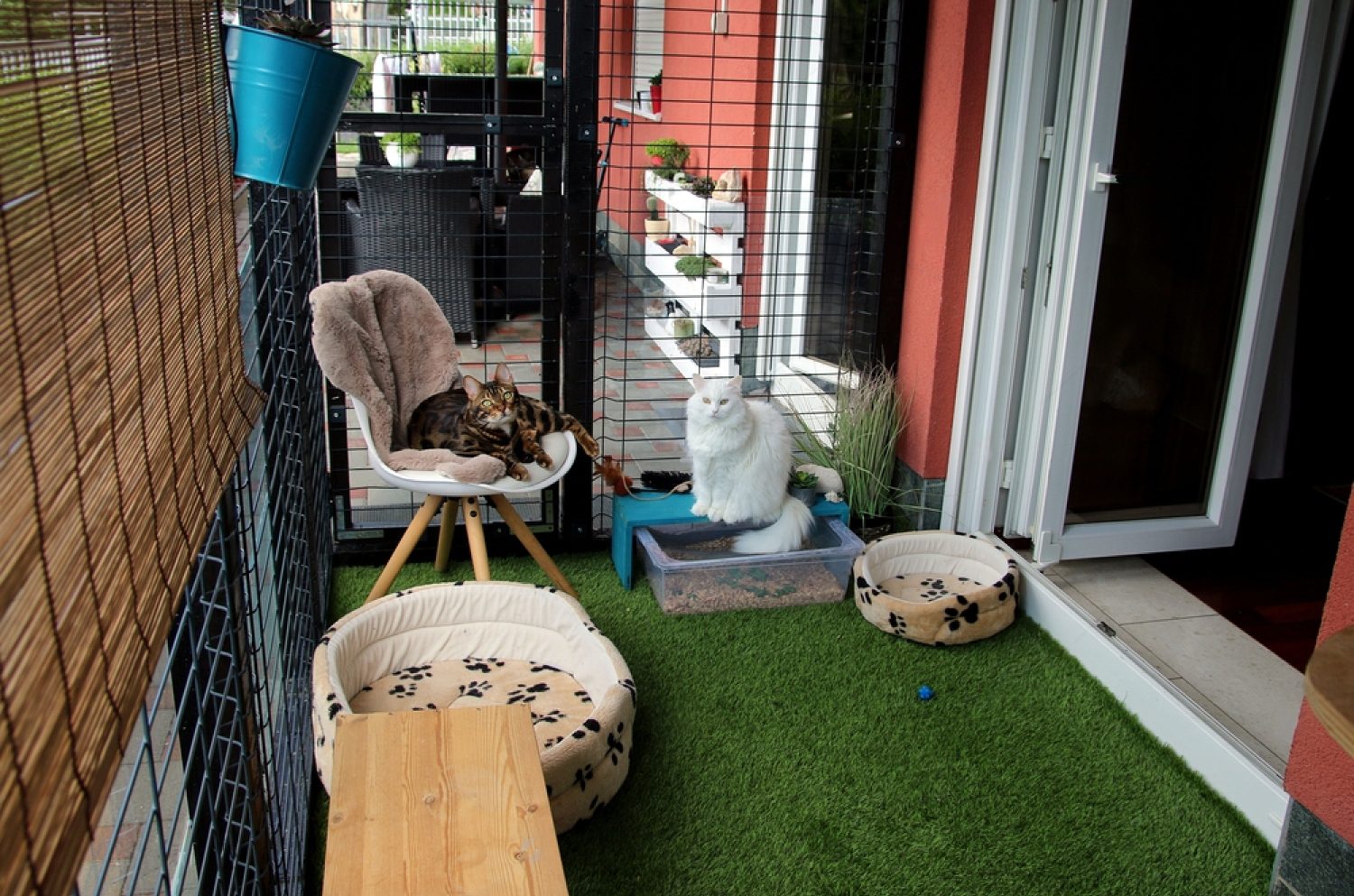
Health Status of Your Cat
Consider your cat's health and age. Young, agile cats may navigate outdoor challenges better than older or health-compromised cats. Outdoor access may need to be limited or supervised for cats with chronic health conditions.
Regular flea and tick control, as well as vaccinations, are crucial for outdoor cats. Discuss with your veterinarian the best healthcare regime for your outdoor cat.
Neutering and Microchipping: Essential for Outdoor Cats
Neutering reduces the risk of unwanted litters and can decrease roaming tendencies in cats. Microchipping is a safe way to ensure your cat can be identified and returned to you if they get lost. It's a simple, quick procedure that can offer peace of mind.
A collar with an ID tag is also recommended, but ensure it’s a safety collar that breaks away if caught.
Indoor vs. Outdoor: Making the Right Choice
Before deciding on outdoor access for your cat, consider their personality, health, and your living environment. Some cats may prefer the safety and comfort of the indoors, while others may thrive with outdoor access.
If you decide against outdoor access, ensure that your home environment is enriched with cat trees, scratching posts, and toys to stimulate your cat’s natural behaviors.
Indoor-Only Living for Cats
Indoor living doesn't have to be boring for cats. Enrich their environment with various types of toys, scratching posts, and perches. Regular interactive play sessions can help satisfy their predatory instincts. If possible, provide access to secured outdoor spaces like balconies or patios.
Remember, each cat is unique, and what works for one may not work for another. The decision to allow outdoor access should be based on a careful assessment of the risks and benefits, tailored to your cat's needs and your specific living situation.
— In this article, we've explored the various aspects of allowing domestic cats outdoor access, comparing their needs and instincts with those of wild panthers, and provided insights for owners to make informed decisions about their feline friends' lifestyle.
 Can domestic cats walk outside without a leash and collar?
Can domestic cats walk outside without a leash and collar?
 Yes, but it is safer to let a cat outside on a leash and with a chip. Collars are not desirable.
Yes, but it is safer to let a cat outside on a leash and with a chip. Collars are not desirable.
 How is it safe to let a cat outside?
How is it safe to let a cat outside?
 You need to make sure that the cat has enough skills to survive outside, has no medical problems, and knows its home address. You also need to let the cat outside at a safe time of day when there is no heavy traffic or danger.
You need to make sure that the cat has enough skills to survive outside, has no medical problems, and knows its home address. You also need to let the cat outside at a safe time of day when there is no heavy traffic or danger.
 How often should I let my cat outside?
How often should I let my cat outside?
 The number of walks outside depends on the individual cat’s needs, age and health. On average, it is enough for cats to go outside a couple of times a week, but some cats may need more frequent walks.
The number of walks outside depends on the individual cat’s needs, age and health. On average, it is enough for cats to go outside a couple of times a week, but some cats may need more frequent walks.
 How do you convince a cat to come home after a walk outside?
How do you convince a cat to come home after a walk outside?
 You can train the cat to come back at the sound or whistle signal. Or track it by its chip.
You can train the cat to come back at the sound or whistle signal. Or track it by its chip.
 What to do if the cat doesn’t come home after a walk outside?
What to do if the cat doesn’t come home after a walk outside?
 It is important to first check the surroundings of the house and try calling the cat by name or whistle. If the cat doesn’t show up within a few hours, it’s worth spreading the word on social media and contacting local animal shelters. We recommend using a tracking chip.
It is important to first check the surroundings of the house and try calling the cat by name or whistle. If the cat doesn’t show up within a few hours, it’s worth spreading the word on social media and contacting local animal shelters. We recommend using a tracking chip.
General Health and Wellness in Cold Weather
Preventive care is crucial in the colder months. Schedule veterinary check-ups in the fall to catch any health issues that might worsen in cold weather. Vaccinations and deworming are important for both cats and dogs as they prepare to face the winter months.
At home, adjust your pet’s diet to account for increased energy expenditure in cold weather. Dogs and cats burn more calories to maintain body heat. Increase their food intake slightly, focusing on a balanced diet rich in carbohydrates and proteins. However, monitor their weight closely to avoid obesity.
Special Considerations for Cats in Winter
Many cats have access to the outdoors throughout the year. Their tolerance for cold weather varies based on breed, fur length, and health.
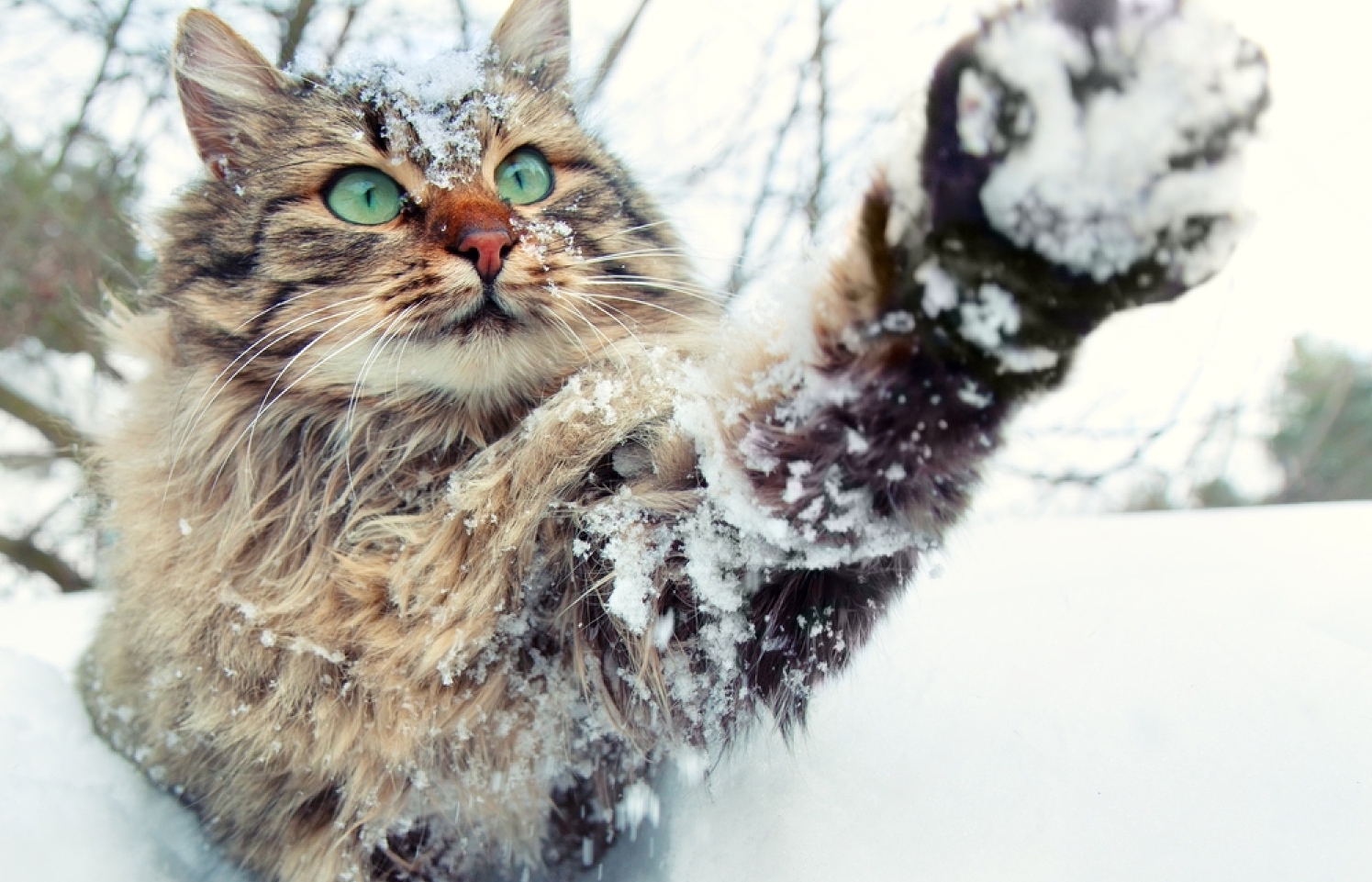
Cats with short fur or health issues should have limited outdoor exposure in winter to avoid respiratory problems like pneumonia or kidney infections. Outdoor cats generally grow thicker coats in winter, providing them with natural insulation. However, gradual acclimatization to cold temperatures is essential.
For those who worry about their cats at night, consider installing a cat flap for free movement. If that’s not an option, create a warm, insulated outdoor shelter with materials like polystyrene, straw, and blankets.
Be cautious about water bodies like ponds in winter. Thin ice can be a hazard, so consider fencing off these areas. Also, be careful with cat clothing or collars, as they can lead to accidents if the cat gets caught.
Winter Care for Dogs
Dogs, especially those that spend a lot of time outdoors, require specific care in winter. Apply protective ointments or balms to their paws to shield them from cold surfaces, ice, and harmful substances like road salt.

For active dogs or those involved in dog sports, consider special footwear like “valenki” boots to protect their paws. However, this might not be necessary for everyday walks in urban areas.
Keep your dog active and moving during walks to maintain warmth. For small, old, or thinly-coated dogs, invest in functional, warm clothing. Avoid letting your dog play with snowballs or sticks, as these can cause injuries or digestive problems. Prevent your dog from eating snow, which may contain harmful substances like road salt.
After walks, thoroughly clean your dog’s paws and check for injuries or trapped debris. Apply a soothing cream to keep their paws healthy. Avoid frequent baths in winter, as this can strip the skin of natural oils, reducing cold protection. Regular brushing is important to remove dead undercoat and maintain healthy skin and fur.
Creating a Comfortable Environment Indoors
Ensure your home is a warm, comfortable haven for your pets during winter. Provide extra bedding and blankets for them to snuggle into. Keep their sleeping area away from drafts and cold floors.
Consider using a humidifier if your home gets particularly dry in winter. Dry air can affect your pet’s skin and respiratory system.
Nutrition and Hydration
Proper nutrition is essential in winter. Provide a balanced diet rich in essential nutrients. Ensure continuous access to clean, unfrozen water to keep your pets well-hydrated.
Remember, winter care for pets goes beyond just keeping them warm. It’s about adjusting their entire care routine to ensure they stay healthy and comfortable throughout the season. Your attentive care will help your pets enjoy the winter months safely and happily.
How often should I wash my pet in winter?
In winter, it is not recommended to wash cats and dogs too often, as this may cause them to become overcooled. If your pet gets very dirty, it is better to use dry shampoo or special wet wipes to clean the fur.
How do I protect my pet from hypothermia during the winter season?
During the winter season, it is important to provide your pet with adequate shelter, a warm bed, and warm dog clothing. You should also limit the amount of time your pet spends outside in cold weather.
Can I feed my pet other foods in the winter?
To keep your pet healthy, it is important to follow the same diet that you use during the warm season during the winter. However, you can add more nutritious ingredients to their diet, such as chicken broth or chunks of meat.
What type of activity is appropriate for my pet during the winter season?
During the winter season, it may be too cold outside for long walks. Instead, you can do indoor activities such as playing or exercising. You can also go indoors, such as petting zoos or halls.
What type of dental care for my pet is important in the winter?
During the winter season, your pet may get less exercise outdoors, which can lead to dental and gum health problems. It’s important to continue brushing your pet’s teeth regularly and using chew toys to help them maintain healthy teeth and gums.